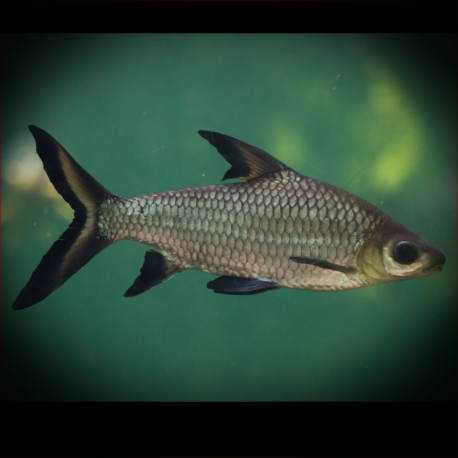More info
Datasheet
| Minimum Tank Size | 860 litres / 227.19 US gallons |
| Maximum Size | 35.0cm / 13.78inches |
| Temperature | 20°C / 68.00°F - 28°C / 82.40°F |
| Hardness | 2.02dgH / 36ppm - 15.02dgH / 268ppm |
| pH | 6.0-8.0 |
General Description
The Balantiocheilos melanopterus, commonly known as the Silver Shark, Bala shark, or tricolor shark minnow, is an omnivorous species belonging to the Cyprinidae family. It can grow up to 35.0 cm in size and is primarily found in rivers and natural lakes such as the Danau Sentarum system. The species is known for its unfortunate popularity in the aquarium trade, often leading to challenges due to its long-term care requirements and potential size.
Aquarium Setup
The Silver Shark requires a large tank with a minimum capacity of 860 litres to accommodate its size. The choice of décor is less critical compared to maintaining water quality and providing ample open swimming space. A tank resembling a fast-flowing river with rocks, gravel, boulders, and driftwood branches is ideal. Clean, oxygen-rich water with high dissolved oxygen levels and water movement is essential. Heavy, tightly-fitting tank covers are recommended due to the species' tendency to be skittish and leap.
Behaviour
Although generally peaceful, Silver Sharks can be aggressive towards smaller tankmates and may disrupt slower or more timid species due to their constant activity and feeding behavior. They are best suited for large tanks with similarly-sized, robust companions like Hypsibarbus wetmorei, Barilius, Cyclocheilichthys, and other compatible species. Silver Sharks exhibit gregarious behavior, forming shoals and establishing distinct pecking orders within groups of five or more individuals.
Feeding and Diet
Being omnivorous, Silver Sharks feed on a variety of food including insects, crustaceans, algae, and plant matter in the wild. In captivity, they readily accept a diet of live and frozen foods such as bloodworms, Daphnia, and Artemia, along with quality dried flakes, granules, and vegetable matter. Offering a diverse diet that includes vegetables like peas, courgette, spinach, and fruits is beneficial for their coloration and overall health.
Reproduction & Dimorphism
Breeding of Silver Sharks in aquariums is rare, with commercial breeding programs relying on hormone-induced breeding for supply. Sexually mature females exhibit a thicker body compared to males, although it is challenging to distinguish sexes in young specimens accurately.
Habitat and Distribution
Native to Borneo, Sumatra, and possibly Peninsular Malaysia, Silver Sharks are pelagic species commonly found in rivers and natural lakes like the Danau Sentarum system. Their populations have faced a decline in various regions, leading to an "Endangered" status on the IUCN Red List. Commercial breeding projects are the primary source of these fish in the aquarium trade due to the scarcity of wild-caught specimens.

